- Administrator
- Albums and Singles
 With drums and percussion courtesy of Aaron Moore (Volcano the Bear), this collaboration is a purely absurd, Dadaist outburst of jazz influenced noise. With cluster bomb percussion that rivals Peter Brotzmann's most chaotic compositions, violin abuse, and spastic turntable-ism, this is two sidelong tracks of noise that resembles very little else, which is probably a good thing for the world.
With drums and percussion courtesy of Aaron Moore (Volcano the Bear), this collaboration is a purely absurd, Dadaist outburst of jazz influenced noise. With cluster bomb percussion that rivals Peter Brotzmann's most chaotic compositions, violin abuse, and spastic turntable-ism, this is two sidelong tracks of noise that resembles very little else, which is probably a good thing for the world.
"The Beginning of the End" opens with high pitched shrieks and rattling percussion, which alternates between quiet passages and spastic turntable scrapes and drums that sound like they’re being thrown down a flight of stairs. The violin appears here and there, mostly in the form of strings being aggressively plucked and pulled. The mix has moments where it slows down and allows some breathing room before turning up the junkyard orchestra again. The dynamics closely mirror what is generally known as free jazz, with its restrained and wide open bits and contrasting blasts of pure chaos. It goes from harsh to absurd pretty quickly, with the turntable spitting out hyperspeed cartoon voices and electronic burbles. When the closing moments arrive, the violin and drums become disturbingly conventional, leaving me expecting another outburst at any time.
The second half of the album is "The End of the Beginning," and it isn’t far out of league from what was heard earlier. Opening with excessive violin torture and percussion like a bouncing rubber ball, there eventually arises a basic tom-tom drum beat that mimics the tension of the Jaws theme, with chaotic outbursts always around the corner. The contrasting random sound outbursts give it more a cartoon like quality though, rather than the pure darkness that could otherwise be there.
The middle maintains the jazz elements that were on the first piece, contrasting the calmer moments with machine gun beats and fragments of music that somehow manage to slip through the explosions. The jazz drumming and overdriven noise continues all the way through the end, where the electronic stuff crosses over into dead on harsh territory, and percussion blasts continue into the final moments.
This disc is definitely rooted in the free jazz tradition structurally, but the traditional horns and strings of the genre are supplanted by the everything–including-the-kitchen-sink instrumentation. At times its almost tiring though, and unlike a harsh noise record, the dynamics here vary so much that the transitions can be almost too jarring. With a tempo and dynamic that could be the audio equivalent of crystal meth, it probably shouldn’t be listened to before bedtime.
samples:
Read More
- Administrator
- Albums and Singles
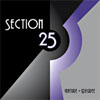 Relatively soon after their "return" album, Part-Primitiv, the classic Factory act has released another long player of new material that channels their classic post punk days into a more modern context, though here with an almost overly nostalgic bent that leaves it sounding a bit dated.
Relatively soon after their "return" album, Part-Primitiv, the classic Factory act has released another long player of new material that channels their classic post punk days into a more modern context, though here with an almost overly nostalgic bent that leaves it sounding a bit dated.
The 12 tracks that make up this album are almost evenly distributed between more melancholy songs with vocals by Larry Cassidy, and the other half featuring Beth Cassidy, daughter of the late Section 25 vocalist Jenny Cassidy. For this reason, the band retains its signature sound throughout, and does feel like the natural follow up to their previous 2006 album.
Bookended by two short tracks of gated reverbed drums and stiff sequenced keyboards, the nostalgia factor is pretty overt immediately upon hitting play. This segues nicely into "Singularity," which is propelled by extremely low restrained rhythms, staccato guitars and dramatic synth flourishes. The vocals are kept pretty much in the foreground, and the 1980s make an appearance via stiff bass sequences. "L’arte Du Math" has a similar structure, but with its dry vocals and bass melodies it starts to resemble some more of the later period New Order material. "One Way Or Another" is the most forceful track on here, and Larry Cassidy’s vocals are a bit more acerbic, and the guitars are more riff rather than note based. By no means is it an aggressive or angry track, but it does contrast the otherwise more restrained stuff.
The songs with Beth Cassidy on vocals take a much more electronic and dance quality, acting like the Hacienda days to the other track’s earlier works. "Remembrance" features her delicate voice with untreated guitar, 4/4 thump drums, and a bit of acid squelch synths. While there is a darker overcast here, "Attachment" comes from a similar palette, but is more upbeat and pop in nature, the tight sequences push it almost uncomfortably close to cliché 1990s dance music. "Mirror" also comes from a techno pop background, but a bit more sparse in the mix, with Beth Cassidy doing spoken word over a simple 808 beat and ambient synths. The sound is still definitely "pop," though the sonic textures are more adventurous here in comparison.
To my ear, the sounds here lean a bit too much on the '90s era of the Factory legacy, and end up a bit too focused on electronic pop, which lacks the timeless quality that the post-punk era stuff has managed to retain. Some of the tracks start to feel too much like the faceless dance music that clogged the era. There are good moments to be found here, but unfortunately it’s not as consistent of an album as it could be.
samples:
Read More
 Relatively soon after their "return" album, Part-Primitiv, the classic Factory act has released another long player of new material that channels their classic post punk days into a more modern context, though here with an almost overly nostalgic bent that leaves it sounding a bit dated.
Relatively soon after their "return" album, Part-Primitiv, the classic Factory act has released another long player of new material that channels their classic post punk days into a more modern context, though here with an almost overly nostalgic bent that leaves it sounding a bit dated.
- Administrator
- Albums and Singles
 This lovingly assembled tribute to revered, yet remarkably obscure, folkie Kath Bloom combines one album of covers by a haphazard array of semi-famous fans with a retrospective of some of Bloom’s own material. While certainly an enjoyable curiosity, the covers album does not come close to capturing the fragile intensity and beauty of the original material.
This lovingly assembled tribute to revered, yet remarkably obscure, folkie Kath Bloom combines one album of covers by a haphazard array of semi-famous fans with a retrospective of some of Bloom’s own material. While certainly an enjoyable curiosity, the covers album does not come close to capturing the fragile intensity and beauty of the original material.
The vast bulk of Kath Bloom’s work was recorded in New Haven, CT with experimental guitarist Loren Mazzacane Connors between 1978 and 1984. While both artists have achieved some degree of counter-cultural renown in the ensuing decades, their partnership was decidedly not a lucrative one at the time: Connors was working as a janitor at Yale, Bloom was a gardener at a cemetery, and nearly all of their releases were put out in very limited editions on Connors’ own Daggett and Saint Joan labels. Two decades later, those largely ignored original releases are highly sought-after and exorbitantly expensive, possibly because Connors is rumored to have thrown out his unsold stock in the mid-'80s (after marriages and relocations forced the duo to go their separate ways).
Both Bloom and Connors stopped recording music for quite some time after their creative dissolution, though Bloom’s creative hiatus lasted considerably longer than Connors’. However, tapes continued to circulate and a post-mortem fanbase steadily grew through word-of-mouth. One of those fans was Richard Linklater, who prominently featured “Come Here” in Before Sunrise, inspiring Bloom to begin releasing new material again in the late ‘90s. Time, thankfully, has only enhanced Bloom’s singing and songwriting and she is belatedly edging towards deservedly achieving the reputation of similarly rediscovered folkies like Karen Dalton and Vashti Bunyan.
Loving Takes This Course originated from a conversation Bloom had several years ago with her filmmaker friend Caveh Zahedi in which she mentioned that she’d like to hear other people record her songs. Zahedi was very enthusiastic about the idea and contacted Chapter Records head Guy Blackman. Together, they spent the next two years contacting all of their musician friends and slowly assembling a full album of material.
The artists appearing on the tribute album are a rather eclectic assemblage both geographically and fame-wise, but most fall squarely in the Americana/indie rock realm stylistically. Several of the better tracks come from artists that I am unfamiliar with, such as Meg Baird’s raw and minimal rendition of “There Was A Boy” or Peggy Frew’s swaying, jazzy take on “Window” (accompanied by The Dirty Three’s Mick Turner). There are also a number of enjoyable interpretations by artists that I did not expect much from, such as Sweden’s The Concretes, Scout Niblett, and Mia Doi Todd. The album’s clear highlight, however, is Devendra Banhart’s raucous Motown-meets-The Velvet Underground version of “Forget About Him”. The only disappointment was Mark Kozelek’s unexceptional re-envisioning of “Finally,” as I am usually rabidly enthusiastic about nearly everything he does. That said, the tribute album is merely pleasant, not spectacular or essential. Aside from Banhart and Baird, this is a relatively tame and quietly reverent affair.
The Kath Bloom disc, however, is great. There are at least three songs here that I will probably still be listening to ten years from now (“Come Here”, “Forget About Him”, and “I Wanna Love”). Notably, two of those are from Bloom’s post-Sunrise return and all three were written by Bloom herself, which is noteworthy because she was not originally a serious musician: her earliest collaborations with Connors were odd spoken-word performance art pieces. Speaking of Connors, he is not as heavily represented here as I would’ve expected, as only seven of the fifteen songs originated from their collaborations. Then again, this is Bloom’s show, so it makes sense that this collection would skew heavily towards her recent, better produced, and more accessible material. While her experimentally tinged lo-fi work was certainly important and unique, her songwriting noticably progressed with age, so much of her strongest and most timeless material dates from her creative resurrection. That said, there is still some excellent early work here, such as “Window” and the tender “The Breeze/My Baby Cries,” but experimentalism is largely absent (aside from Connors’ subtle wordless moaning).
When Bloom is at her best, her vulnerable, quivering voice imbues her heartbreaking songs with an irresistible power and humanity. That, of course, is largely the reason that a tribute album is somewhat inherently doomed: Bloom has written some absolutely sublime songs, but no one will ever be able to perform them as strikingly as Bloom herself. Nevertheless, this collection is fine introduction to a singular artist and any widely available Bloom release is cause for excitement. The retrospective disc has not left my CD player since it arrived.
samples
- Kath Bloom - Come Here
- Kath Bloom - I Wanna Love
- Devendra Banhart - Forget About Him
Read More
- Administrator
- Albums and Singles
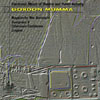 I have had a long time love affair with the first generation of electronic music composers. Perhaps it is akin to the way I used to romanticize the early explorers of America when I was a young boy, only now I geek out over those who pioneered circuit boards. Gordon Mumma was such a pioneer, exploring the cybersonic world with his own home built audio devices. His music partook in the spirit of joyful discovery that was evident throughout those early years, while also being physically visceral.
I have had a long time love affair with the first generation of electronic music composers. Perhaps it is akin to the way I used to romanticize the early explorers of America when I was a young boy, only now I geek out over those who pioneered circuit boards. Gordon Mumma was such a pioneer, exploring the cybersonic world with his own home built audio devices. His music partook in the spirit of joyful discovery that was evident throughout those early years, while also being physically visceral.
“Megaton for Wm. Burroughs” opens with a searing blast, a long overdriven tone that gradually builds in intensity, the hot white heat of a nuclear decimation, than fades like smoke from a mushroom cloud. The sounds of laser ray guns emerge from the ruins, a chirping crossfire of blips and squeaks. Strangled strings and other oddments are played ONCE group, whose members included Robert Ashley, as accompaniment to Mumma’s tape composition. As the piece progresses the bleeps are elongated into psychoactive slurs, trailing electric glissandos, the white fuzz of a burned out television set. For awhile no clear reception is present, but then voices come in: different military men giving orders and reports in each speaker, along with the rat-a-tat-tat of machine guns. The song ends with the steady hi-hat taps of simple jazz percussion. I can see why this song was written for William Burroughs: it is very evocative of the apocalyptic interzone he inhabited.
Three out of the four songs collected here were used originally as accompaniment for actors in various stage productions. While all were able to stand on their own, apart from attendant theatrics, sometimes it seemed that I would have been able to get more out of them if I had been present to see what was going on. “Conspiracy 8,” co-written with Stephen Smoliar, is a case in point. It consists mainly of atonal feedback in varying degrees of amplitude, strange rustlings, and the occasional ding of a clerk bell. Laughter from the audience is heard at various points throughout, though I don’t hear in the music what it is that might be funny. It is still enjoyable, but since I can’t see what is going on, I won’t be joining with the laughter. “Cirqualz” by contrast, is far funnier. Starting with the opening bars from Beethoven’s Third Symphony, and a voice that says “those two whiplashes of sound that shattered the elegant formality o the eighteenth century”, before moving into a series of brief, but disarranged, sections of circus, marching, and romantic music. Sounds of fireworks filter in, exploding above the symphonic fanfare that is now slightly drowned out by synthesizer gurgles. It all ends rather abruptly with a screech of brakes and a cinematic car crash.
“Cybersonic Cantilevers” is a gem, and for me the highlight of the album. For this piece Mumma invited public participants to join him in supplying sounds of their own choice into microphones and cassette decks, which he then processed in real time with his cybersonic equipment during a day long sound installation. The 19 minutes here are a condensation of the last hour of the performance, assembled from what he was able to capture with a portable recorder. It begins with a hyper rock and roll snippets juxtaposed with the gravelly voices of detective radio dramas. The stops, starts, and fast switches between these sound sources, all accompanied by weird effects, creates a brilliant off-kilter rhythm, before dissolving into a beautifully mesmerizing drone for the second half of the song.
The works presented here span the years from 1964 to 1980. This is an important document from an important American composer, and the perfect addition to the library of anyone collecting early electronic music.
samples:
Read More
- Administrator
- Albums and Singles
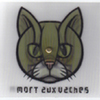 Despite its utterly mystifying and goofy lenticular packaging, My Cat Is An Alien’s contribution to Staalplaat’s long-running studio session series is a very focused, formidable, and often incendiary affair. The Opalio brothers have a refreshingly unique and calculated aesthetic that more closely resembles an inspired evolution of free jazz than anything being done by their peers in the noise underground.
Despite its utterly mystifying and goofy lenticular packaging, My Cat Is An Alien’s contribution to Staalplaat’s long-running studio session series is a very focused, formidable, and often incendiary affair. The Opalio brothers have a refreshingly unique and calculated aesthetic that more closely resembles an inspired evolution of free jazz than anything being done by their peers in the noise underground.
My Cat Is An Alien’s story has an improbably fairy-tale-esque origin: in 1997, Maurizio and Roberto Opalio released their debut CD-R (limited to 30 copies) and sent one to Thurston Moore. Within two months, they were making their live debut as the opening act for Sonic Youth’s Italian tour. Since then, the duo have released an ungodly number of limited edition records and CD-Rs on their own Opax label, and made split albums with underground luminaries ranging from Loren Mazzacane Connors to Mats Gustafson to Jim O’Rourke. Notably, the Opax releases are generally housed in very arty handmade packaging, often featuring paintings by Roberto. With that historical precedent, it is difficult to process why this release looks like a gimmicky ‘80s baseball card and features a cartoon cat turning into an alien.
The exceedingly cryptic packaging gives no information about the music contained within, but Mort Aux Vaches consists of three lengthy works. The opening piece fades in with crackling vinyl, twinkling bells, and a slowly intensifying drone of gently shimmering guitars. Soon, some subtly burbling and spacey synthesizers begin to float pleasantly above the mix. However, that idyll is violently shattered by the harsh, almost animal wail of a treated guitar and the previously restrained spacey electronics increase in intensity before being ultimately engulfed in a rising surge of roaring static.
The second song is nearly half an hour long and effectively dominates the album. It begins with an incredibly dense maelstrom of chittering and oscillating sci-fi electronics augmented by cymbal flourishes and buried guitar moans. Slowly, the quivering chaos intensifies, the cymbals become more spirited, and deep tribal drums creep into the mix. Gradually the drums steal the focus, as a very insistent crash cymbal joins the pounding toms. Around the eight-minute mark, however, the propulsive tribalism disappears and the swirling electronic chaos asserts its supremacy once more. However, it is soon enhanced by some incredibly cathartic swooping guitar noises that sound like a family of dying elephants. Eventually, it all ebbs and a haunting ambient interlude of bells and a swelling, phase-shifting synthesizer wash emerges from the twittering, rippling electronic wreckage. That spooky foundation is maintained for an extremely long-time, but never becomes any less compelling, as an ever-shifting cloud of frothing improvised noise weirdness colors it. Shortly before the song ends, however, a mournful menagerie of strangled guitars appears and breaks the hypnotic spell.
Not unlike the first piece, the third song opens with pleasantly glistening guitar ambiance and a loop of spacey laser noises (the Opalio brothers are quite fond of incorporating toys into their work). The ambiance subtly throbs and wavers and increases in intensity until it is joined by a deep, rumbling percussion loop and feedback-heavy squalls of agonized guitar and gurgling, lurching electronics. It all coheres into a roaring, howling crescendo, then slowly fades away, leaving only a lonely ride cymbal in its wake.
There is nothing accidental or sloppy about these songs: Roberto and Mauricio make it abundantly clear that they know exactly what they are doing at all times and have recorded a decidedly complex, visceral, and textured set. I have not delved too deeply into MCIAA’s back catalog (being an MCIAA completist would result in my instant financial ruin), but it seems like this would be an excellent first album to get for anyone unfamiliar with their work. This is devastating and deliberate work- it is exceedingly rare for improvised music to work at such a gut-level.
Samples:
Read More
- Administrator
- Albums and Singles
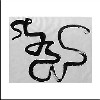 Carelessness, especially the calculated variety, has become a default pose for the indie rocker of today. The music of Dustin Wong radiates the same casual sensibility, but that comes from his art rather than his manners. His first solo album, Seasons, is lazy, lighthearted, and scatterbrained, but Wong's musicianship welds its disparate elements into a unified piece of art.
Carelessness, especially the calculated variety, has become a default pose for the indie rocker of today. The music of Dustin Wong radiates the same casual sensibility, but that comes from his art rather than his manners. His first solo album, Seasons, is lazy, lighthearted, and scatterbrained, but Wong's musicianship welds its disparate elements into a unified piece of art.
Wong has already developed a singular style despite not being a veteran guitarist. Whether it’s heard in the primitivistic stadium-rock of his main band, Ponytail or in long-form minimalist compositions through his former membership in Ecstatic Sunshine, his playing is distinctive. Both bands are linked by Wong’s preference for jazzy chords and sudden bursts of rapid-fire strumming. Not limited to the guitar, he plays a multitude of instruments on Seasons while keeping to the same joyous, anarchic style.
Seasons is divided into four long suites; named (appropriately enough) after the seasons. These suites are nothing but collections of song fragments which bear little immediate similarity to each other. A fragment will consist of a simple riff or chord sequence repeated with little variation. Then at some arbitrary point, Wong will stop the piece, as if he’d forgotten an errand, and abruptly start another. Yet what we hear is not sloppiness, but the organic division of one idea and the next. And having so many ideas, Wong needs to quickly move along. He covers a vast amount of musical territory in that fashion. A swirling mass of looped synthesizers will follow a chiming instrumental on an acoustic guitar. A cloud of delayed autoharp will condense into the stiff ticking of a drum machine. First time listeners cannot guess what they will hear, only that it will be engaging. In Seasons, nothing sounds inevitable but everything sounds natural.
Like his bandmates in Ponytail, Wong cultivates a naïve, childlike style. On his own, he doesn’t practice the kind of grating babble-lyrics that accompany his band, but there is a mildly regressive quality to his solo-project. Some of that can be attributed to the unhinged shredding that he occasionally breaks into. These technical passages thankfully aren't irritating because they are brief and exuberant, not plodding and pretentious. Wong isn’t trying to impress but to entertain.
The other part in Wong’s naïve style comes from the album’s bright, drifting keyboard instrumentals; their lilting arpeggios recall the gentle cloud-world soundtracks of Super Mario Bros 3. Like the composers for Nintendo, Wong transcends the expressive limitations of primitive digital keyboards through melodic complexity. His tinny synthesizer tones sway in counterpoint like images in a cybernetic daydream. In both instances, the cuteness in Wong’s music seems genuinely idiosyncratic. Unlike the slick, well socialized aesthetes of contemporary indie-pop, he does seem like a dork and comes off the better for it.
It may appear piecemeal but Seasons reveals its merit when heard in its entirety. Wong’s distinctiveness as a musician remains intact through the album’s wild variations of mood and style. Unlike most practitioners of modern rock, he doesn’t need a predetermined mode to compensate for a lack of skill or individuality (as opposed to individualism). The unity of Seasons is like the unity of a person: various but still recognizable. Time softens the discord of its assorted parts and eventually a clear picture of the artist’s mind will emerge.
samples:
Read More
- Administrator
- Albums and Singles
 Primarily the duo of Heather Young and Noah Anthony—though others have been dragged in along the way—Social Junk uses pounding beats and minimal synth to concoct some of the most pummeling pop this side of the sun. With drenched vocals and spare but wisely utilized parts the duo draw on tactics as far reaching as industrial, post-punk and Krautrock in their rugged and broken songcraft. This, their most recent sonic tastament, reaches even further into their warped world.
Primarily the duo of Heather Young and Noah Anthony—though others have been dragged in along the way—Social Junk uses pounding beats and minimal synth to concoct some of the most pummeling pop this side of the sun. With drenched vocals and spare but wisely utilized parts the duo draw on tactics as far reaching as industrial, post-punk and Krautrock in their rugged and broken songcraft. This, their most recent sonic tastament, reaches even further into their warped world.
Interestingly, the group is known for producing vastly different results, swerving between proto-industrial clunk to spacey synth pop over the course of albums and even songs. "Champos '08," for example, features electronic crud mixed in with rotator blades and squeal that reads more like some basement Michigan noise project, while the percussive organicism of "Dirty Cloud" largely explores a much more overtly pretty side of psychedelia. Concussion Summer, their most recent full length on the Not Not Fun label, grinds out mostly instrumental clatter that is in constant flux. This one seems to meld the brazenly fried feel of the latter while persuasively melding it with a kind of numb song form whose fuel is in its monotanous, dead-to-the-world attitude.
This is more or less clear right from the opener, "It Just Isn't the Same," whose constant thud is at once primitive and futuristic, the battle cry for an interstellar war fought with spears and rocks. While the parts are all simple—the three note synth melody unendingly stuttering forward, the bleating scrapes—they are mixed so masterfully, brought forth, drawn back, reworked, that the sound is in constant motion, providing a spaced drift for the half-dead vocals to drift across.
"Those Final Seconds," which begins with a fax machine running across the rattles of snakes and delayed vocal punctuations, creates a sort of endless loop that feels overwhelmingly trapped, stuck in place until, somehow, it manages to wriggle itself into slightly new positions, slowly freeing itself of its confines while free rock drum clatter mashes it to a pulp from beneath. This is some blown out stuff and truly fried material, a sax bellowing outward signaling the approaching peak of a seven-minute buildup. Having wrestled itself free, "Grief" seems to a signal a kind of anti-climax, a new and placid world where synths drape over one another as they reach toward a mangled synth pop dreamworld as abstract as it is tangible. Jon Rickman and Bobby Caution join the duo on this (Rickman also plays on the title track), giving it a more full sound while still retaining the distorted peace within the work. It serves as a fine example of the different sounds the group can draw upon while still managing to sound like itself.
The following title track, the longest work on the album, moves between so many modes that it's tough to pin down. It glitches about, building and dying under its own weight like a Robert Ashley piece gone awry, or better yet as covered by Dead C. It is a true monster that feeds right into the brief "Behind a Wall" before the smoldering simmer of "Someone Upstairs" drifts through the coals. When all is said and done it is difficult to not be a convert, and even tougher not to believe in the group's increasing potential. Every release seems to push the bar further, and this one is another impressive statement along their path, as twisted as it is sincere.
samples:
Read More
- Administrator
- Albums and Singles
 Marc Richeter's Black to Comm project has always been more or less singular in its scope, seeking no less than than the outer reaches of deep drone meditation. Calling on Renate Nikolaus and Ulf Schutte to contribute electronics, bells, percussion, violins, water and more on top of his own monolithic organ play, Richter has crafted a monster with this lone 35-minute piece. Just make sure submersion is an attractive state before descending.
Marc Richeter's Black to Comm project has always been more or less singular in its scope, seeking no less than than the outer reaches of deep drone meditation. Calling on Renate Nikolaus and Ulf Schutte to contribute electronics, bells, percussion, violins, water and more on top of his own monolithic organ play, Richter has crafted a monster with this lone 35-minute piece. Just make sure submersion is an attractive state before descending.
With the sudden emergence of a new drone dialect in underground music, Richter brings a classical sense to his concoctions, drawing on the likes of Steve Reich's organ works, La Monte Young's extended sense of time, Hermann Nitsch's sound world and Charlemagne Palestine's power far more than psychedelic babble steeped in rounded edges. His is a focused maelstrom, less concerned with dips into the nether regions of his mind than in sharp trajectories directly towards the sun. Starting with a microcosm of a drone, the piece largely develops itself as an extended crescendo, continuously moving steadily forward into ever deeper waters.
This sort of constant upheaval in a piece has a way of falling short, but Richter is wiser than a lot of his cohorts, instead focusing on an internal build rather than one extending out from itself. The bulk of the work is enshrouded in the subtle organ play, which reads as singular in any given moment but whose constant flux is clear over the course of the work. Within that cloud Nikolaus and Schutte are constantly building, laying down increasinly kinetic details that clatter, murmur and spew there way out of the organ flow like larvae out of a heated pool. Nothing ever takes hold though, the chatter instead serving to divert attention away from the bold organ drone which, somehow, ingrains a kind of festering bother in the listener whose creepiness is far more internal and personal than overt drawings upon darkness.
Half way through the work breaks up entirely, the tickling metallics fumbling forward until, at last, the work explodes under its own weight. A thick smoke, sharp atop the smooth drone, ricochets across while warbling electronics distort themselves into dreams haunted by wolves and ghosts and ivy. By the time it all comes to a fore it has buried itself so deep that any semblance of self is surrounded, blown apart by the sheer quantity of sound. This, it seems, is why they recommend it be played loudly.
This sort of slow development does more than its share of demolition, but it also reveals a fully realized vision and a musician whose focus and sonic sense are at once contributing to and one step removed from so much of the drone music coming out now. This is not music to take drugs to so much as it is music as drug, an intoxicating and immersive experience akin to the very MC5 song it is named after. Not in sound perhaps, but certainly in attitude and scope.
samples:
Read More
- Administrator
- Albums and Singles
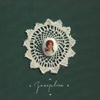 The passing of bassist Evan Farrell was enough to make Jason Molina think about breaking up the band, according to some recent interviews. Instead, Molina turned to his guitar and ended up writing what might be the best Magnolia Electric Co. record since the group's 2003 debut. Josephine finds the band looking forwards and backwards, breaking new ground and mining old territory and creating something strangely seductive in the process.
The passing of bassist Evan Farrell was enough to make Jason Molina think about breaking up the band, according to some recent interviews. Instead, Molina turned to his guitar and ended up writing what might be the best Magnolia Electric Co. record since the group's 2003 debut. Josephine finds the band looking forwards and backwards, breaking new ground and mining old territory and creating something strangely seductive in the process.
Molina has been surprisingly candid about his latest record. He doesn't quite explain Josephine, but he doesn't hide the fact that it is a reckoning with the death of a friend and fellow musician. Appropriately, the record is one of the darkest the Company has crafted. In places it recalls the subterranean gloom and lonely isolation of the best Songs: Ohia records, but it doesn't linger in the past long enough to be a step backwards. From the opening "O! Grace," which features a surprising sax solo, to the romance of "Rock of Ages" and the punchy organ on "Little Sad Eyes," Molina and his band avoid falling into clichés by refusing to sit still. The variety of musical styles and instrumentation is, in part, a tribute to the ideas Farrell had for this record, but also proof positive that Molina is one of the best songwriters this country has. He moves gracefully from the straight rock of "Josephine" and "The Handing Down" to the woeful sludge of "Knoxville Girl" and the bar-room balladry of "Heartbreak at Ten Paces." Keeping these disparate adventures in tact is Molina's magical lyricism, which deserves a review of its own in many ways. Although the familiar images of horizons, bells, moons, and birds persist on this record, they acquire a personal dimension in light of Molina's forwardness.
It would be easy to say that Josephine is a concept record about the loss of a bandmate, but that'd sell Molina's songwriting ability short. Perhaps the most emotionally overwhelming song on the record, "Whip-Poor-Will," was written at least as early as 2003. It appeared on the bonus CD to the Magnolia Electric Co. debut in acoustic form and it remains largely unchanged lyrically. So, while the song might sound like a letter to the deceased, it is more likely a song about loss and mortality in general. With Molina it's hard to tell, however. He's called the lyrics to "Josephine" a rebus and refused to say too much about who or what Josesphine is. As honest as he is on this record, he's also just as obscure and impressionistic as he's always been.
Josephine focuses a lot on ghosts, hope, and believing in something, but that only solidifies the album's central figure enough to make her something less than an abstract name on paper. She's mentioned throughout the record with references to hope, freedom, and foolishness surrounding her. On "Hope Dies Last," the band half cries out for her, like she's a lost lover far beyond their reach. Musing over the album's many themes is probably best left to each listener, who can mull over lyrics, images, and the album's evolution in the same personal way that Jason created them. But, I think it might be possible to decode Josephine by listening to the deep, resounding bass that dominates nearly every song. Its sensuous, pulsing sound is the album's lifeblood. It is at the center of the best songs and, like a gift, encourages Molina to explore the dark territory that has always marked his best work.
samples:
Read More
- Administrator
- Albums and Singles
 This marks an enormous progression from the Cremations compilation released earlier this year: there are no sound experiments or atmospheric interludes here, just killer noise-ravaged synthpop. Cold Cave's proper full-length debut (on Wes Eisold's own Heartworm Press) was well worth the wait. Also, it is amusing to note that some of the most memorable and danceable indie pop songs of the year involve Dominick Fernow of Prurient.
This marks an enormous progression from the Cremations compilation released earlier this year: there are no sound experiments or atmospheric interludes here, just killer noise-ravaged synthpop. Cold Cave's proper full-length debut (on Wes Eisold's own Heartworm Press) was well worth the wait. Also, it is amusing to note that some of the most memorable and danceable indie pop songs of the year involve Dominick Fernow of Prurient.
Heartworm Press
This brief album clocks in at around 30 minutes and contains only nine songs but at least a third of them achieve EBM near-perfection. Eisold vocalizes his caustic lyrics with a world-weary conviction that favorably reminds me of all of the best British post-punk bands, but the darkness and catharsis is transformed into something accessible and non-oppressive through memorable melodies, catchy synth hooks, and charmingly naïve drum machine beats. The title cut is a great example of the artful union of bleak intensity and shameless embrace of '80s dance music that makes Cold Cave such a likeable band: Eisold’s lovelorn melancholia is beautifully enhanced by former Hatebreed guitarist Sean Martin’s C86-style jangling, a relentless pounding beat, burbling keyboards, and warm and deceptively simple synthesizer chords.
"The Trees Grew Emotions and Died" is similarly propulsive and unrelentingly catchy. Xiu Xiu’s Caralee McElroy and Eisold share vocal duties over a foundation of rumbling bass and impossibly thick and anthemic synth hooks. It also prominently features a somewhat harsh guitar solo, which is an unsubtle example of another aspect of Cold Cave’s excellence: despite strongly adhering to pop song conventions and featuring big dance beats, there is an omnipresent menacing hiss, ugliness, and distortion lurking beneath it all. While rarely being in the foreground, this noise element is enormously important to Eisold’s aesthetic. Consequently, Cold Cave songs have a damaged, dark, and heavy feel that bears almost no resemblance to slickly-produced precursors like OMD, Yaz, or the Human League, despite being superficially built upon similar foundations.
My favorite song on the album is probably "Youth and Lust," which marries gorgeously lush minor key synth chords, alternating male/female vocals, a insistent thumping beat, and an irresistible keyboard riff. The rest of the album is pretty solid, but hopelessly eclipsed by the aforementioned three songs. Had they been included on Cremations, "Cebe and Me," "I.C.D.K.," and "Heaven Was Full" would have all been standouts, but the high points of Love Comes Close are on a completely different level.
Love Comes Close captures the sound of an excellent band accelerating rapidly towards their prime and features some of the best songs that will be released this year. It is rare for me to be this enthusiastic about a new band, but I had unreasonably high expectations for this album and they were largely met anyway. It's worth noting that some of Eisold’s pre-Cold Cave bedroom electro-pop recordings have just been released this month as well (Ye Olde Maids’ God Blesses Us, Mother Dresses Us).
Samples:
Read More

